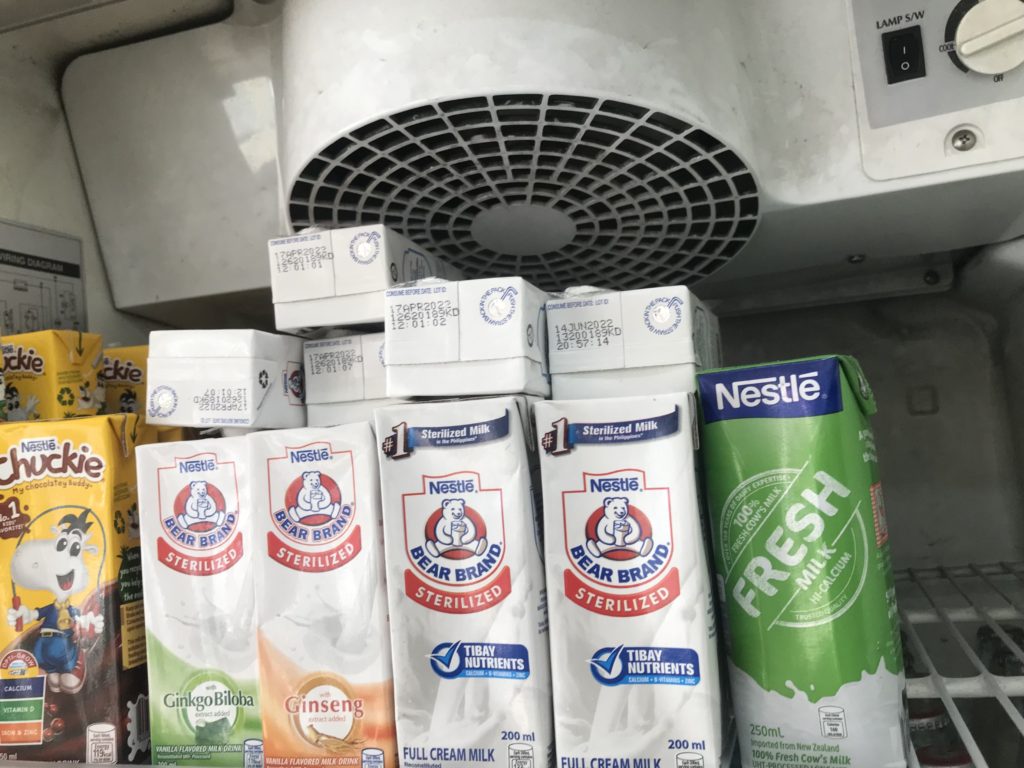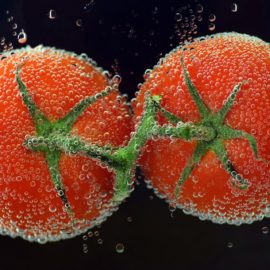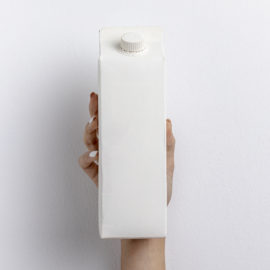
During the ancient times, our ancestors relied on traditional methods of preservation to enhance the keeping quality of foods. Traditional methods such as drying, salting, and smoking helped them ensure a healthy stock of food, especially during the winter season. Asians fermented meat, fruits and vegetables.
Fermented products like kimchi (Korea), bagoong (Philippines), and miso (Japan) are still a staple. But we have come a long way since then. Today, foods are more shelf-life stable, more nutritious, and much safer. One obvious reason for this is the invention of the refrigerator, which became a common household equipment since the early 1930s.
The use of low temperature storage slows down microbial activity, slowing down the rate of spoilage of food. This is particularly useful for perishable items like meat, seafood, and dairy products. But have you ever wondered why a lot of many food items that we find in the supermarket do not spoil quickly without refrigeration?
You might also like: UHT And Pasteurized Milk: What’s The Difference?
Well, low temperature storage is not the only way to make food shelf life stable. Sure, many foods, can be stored at ambient temperature for months or even years. What makes this possible is a method called aseptic processing. This allows for a continuous supply of food and reduction of food wastage. Products of aseptic processing include cheese, wine, yogurt, ice cream mix, milk, and fruit juices. Before we go further, let’s define exactly what aseptic processing is.
WHAT IS ASEPTIC PROCESSING?
Aseptic processing, also called ultra high temperature (UHT), involves heating food using commercially sterile equipment and pouring it into hermetically sealed containers while maintaining aseptic conditions. The term aseptic means the process and equipment ensure to introduction of microorganisms to the food product. The item is “shelf stable” and does not require refrigeration until opened. The FDA’s “Process Authority” must receive all aseptic operations’ process filings.
The Process Authority determines and verifies the necessary time and temperature based on the machinery being used and the items being processed. There is no predefined duration or temperature for aseptic processing. In most cases, the process requires heat treatment of 284°F (140°C) for 4 seconds. But the criteria is similar to that for canning to achieve commercial sterility. In the UK, the minimum heat treatment for dairy products are set out in regulations. For milk, the minimum heat treatment is 1 second at 275°F (135°C), 2 seconds at 284°F (140°C) for cream and milk-based products, and 2 seconds at 300°F (148.9°C) for ice cream mixes.
You might also like: What Is Flash Pasteurization?
Aseptic processing exhibits better quality over conventional canning when processing viscous low acid products. The significantly lower processing time and duration allows for better sensory (flavor, color, and texture) and nutritional retention. However, Aseptic processing has its limitations, and does not offer the same advantages in all food products. Some of its advantages are the huge capital and complexity of the plant (mostly from the necessity to sterilize packaging materials, and maintenance of sterile air and surfaces), limited number of applicable products, the need of a relative homogenicity of the fluid and sophisticated instrumentation.
HOW IT IS DONE
The application of the aseptic process entails sterilizing the product, the packing material, and maintaining the sterility throughout the filling and sealing processes.
In a continuous heat exchanger, food is heated in relatively thin layers with precise control over the sterilizing temperature and holding time. It is crucial to determine the shortest time that each particle can take to pass through the holding section and the rate of heat transfer from the liquid to the center of the particle. This is to make sure that microbial spores cannot survive the procedure.
The sterile product is chilled in a second heat exchanger or, if deaeration is also necessary, in a vacuum chamber. Laminated cartons are frequently utilized since containers do not need to endure sterilizing conditions. When compared to cans and bottles, they have significant economical advantages in terms of the price of the pack as well as the costs of transportation and storage. Hydrogen peroxide is used to pre-sterilize the containers, while filtered air and UV light are used to keep the filling equipment contained and sterile. To stop contaminants from entering the filling machine, a positive air pressure is maintained. The process successfully applies to liquid and small-particulate foods.
You might also like: Canning and Commercial Sterility
The ideal UHT process would immediately heat and hold the product to the required temperature in order to achieve sterility and cool it instantly to filling temperature. The degree this is actually accomplished relies in part on how the food is heated, how sophisticated the controls are, and in part on how expensive the equipment is. It also depends on the food’s characteristics such as viscosity, presence of particles, heat sensitivity and tendency to form deposits on hot surfaces.
EFFECT ON FOODS
Heat sterilization helps increase the shelf life of food at ambient temperatures while minimizing nutritional content and eating quality changes. However, this is better achieved by aseptic processing systems than conventional canning.
Color
Most naturally occurring food colors are significantly affected by the time-temperature combinations employed during canning. For instance, red oxymyoglobin pigment is transformed into brown metmyoglobin and purplish myoglobin is transformed into red-brown myohaemichromogen in meats. The color of sterilized meats is also influenced by Maillard browning and caramelization. In cooked meats, though, this change is acceptable.
In canned foods, discoloration occurs during storage. This happens usually when tin or iron react with anthocyanins to produce a purple pigment. In sterilized milk, caramelization, Mailllard browning, as well as changes in the reflectivity of casein micelles leads to slight color changes.
In UHT processing, however, there is an alteration in the meat pigments, but no caramelization or Maillard browning occurs. Betanin and carotenes are essentially unchanged, and anthocyanins and chlorophyll are better maintained. There is also an increase in whiteness of color.
Flavor and aroma
There are numerous complex changes that take place in canned meats. These include pyrolysis, deamination and decarboxylation of amino acids, decomposition, oxidation and decarboxylation of lipids, Maillard reactions, and caramelization of carbohydrates to furfural and hydroxymethylfurfural. The interaction of these components produces over 600 flavor compounds. The formation of lactones and methyl ketones from lipids, denaturation of whey proteins to create hydrogen sulphide give milk its cooked flavor.
In aseptically sterilized foods, the changes in flavor and aroma are less severe—the natural flavors of milk, fruits, and vegetables are better retained.
Texture
Proteins lose their ability to hold water during coagulation. This causes muscular tissues to shrink and harden, changing the texture of canned meats. Collagen hydrolysis, solubilization of the resulting gelatin, melting, and fat distribution throughout the product all contribute to softening. Some products are added with polyphosphates to bind water to increase the tenderness and reduce shrinkage.
In fruits and vegetables, hydrolysis of pectin materials, gelatinization of starches and partial solubilization hemicelluloses cause softening. The addition of calcium salts to blanched water or brine syrup forms insoluble calcium pectate to increase the firmness of the canned product.
In milk, the modification of K-casein causes small changes in viscosity, leading to an increase in sensitivity to calcium precipitation and coagulation.
But in aseptically processed fruit juices and milk, the viscosity is unchanged. In solid fruits and vegetables, the texture is softer than unprocessed food because of solubilization of pectic materials. Furthermore,
In meat products, the relatively long time for collagen hydrolysis and low temperature to prevent toughening of meat fibers are typical in canning, but not in UHT processing. Toughening of meat is therefore possible under UHT processing. The texture of meat purees is determined by size reduction and blending operations, and is not significantly affected by aseptic processing.
Nutritional value
Aseptic processing is very suitable to the application of HTST procedures. The amount of heat transfer and the time-temperature treatment utilized affect how much nutrition is destroyed during thermal processing. The preservation of nutrients is considerably improved in an aseptic processing system than canning because of the lower processing time and temperature range. The B vitamins, in particular, such as biotin, niacin, panthothenic acid, and riboflavin are unaffected during aseptic processing.
This blog post discusses just a small portion about aseptic processing. For more information regarding this topic, refer to this page from the FDA: Aseptic Processing and Packaging for the Food Industry.
References
V. Vaclavik, E. Christian (2014). Essentials of Food Science (4th edition). Springer.
P. Fellows (2000). Food Processing Technology. CRC Press.
M. Shafiur Rahman (2007). Handbook of Food Preservation (2nd edition). CRC Press.


